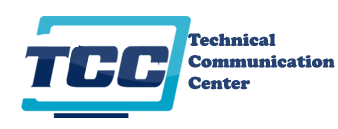Technical Writing
The Built-In Limit to Rounding Off Numbers
Is there a limit to rounding off numbers? Yes there is. The digits after the decimal point reflects the degree of uncertainty we have inherent in the measurement (and thus in the number) itself. For example, 10.7 is less exact, less accurate, than 10.743. Thus we can say that we are “more sure” about 10.743;…
Read MoreTechnical Book Review – "Enabling Globalization" by Nabil Freij
© 2010 Ugur Akinci “Enabling Globalization: A Guide to Using Localization to Penetrate International Markets” by Nabil Freij, the President of the localization company GlobalVision International Inc. is a must reference for everyone thinking to market products and services globally. It’s kind of ironic but true – globalization requires localization, and this book has plenty…
Read More"Convenience" is the Main Reason Why We Round Off Numbers
© 2010 Ugur Akinci We technical communicators deal with numbers all day long. We write them, calculate them, interpret them. We also round them off. “What’s the best way to round off numbers?” a reader asked. And I did some thinking about it because I realized I haven’t given it enough thought in the past.…
Read MoreTechnical Writing – Clean Your Sentences Down to the Bone
Have you ever watched a fisherman filet a fish down to the bone at the fisher’s market? They do it quickly, separating fish from bone in a flash, without wasting anything. You should do the same to your sentences to write the kind of smooth and “delicious” technical documents that your intended audience can enjoy…
Read MoreA Conversation with a Technical Communicator – Pallavi Madhusudhan
(Excerpts) An Interview with Pallavi Madhusudhan Which is your favorite font? Why? My favorite font would have to be the standard Ariel font. This is what we use widely in official documentation and it’s what I am most comfortable using for personal correspondence as well. What type of training programs or workshops would you prefer…
Read MoreTechnical Writing – Use “Must” Sparingly
© 2010 Ugur Akinci When a word is used frequently it starts losing its power. That’s why you should choose your words carefully and use them only when you really mean it. “Must” is a word sometimes used too frequently in technical writing. Try eliminating must from your writing to communicate better with you readers.…
Read MoreA Career in Technical Writing?
(Excerpts) Ever thought about what goes into creating the user manuals or instruction brochures of your music system, mobile phones or even the car maintenance guides? Most of us just manage to glance through the item, leave alone going into the technical details. Since such information is meant for the layman, simplifying the jargons associated…
Read MoreHow to Write Technical Documents for the Intended Audience
There is no such thing as a single “user guide” or “product manual” in technical documentation. It all depends on the audience you are writing for and their specific interests. For example, imagine you are writing a “software manual” for software that audits medical insurance claims. Here are the interests of different groups of readers…
Read MoreHow to Transform Long Paragraphs into Easy-to-Understand Tables
© 2010 Ugur Akinci There are those cases when the best way to make a long and complicated paragraph understandable is to transform it into a table. Here is an example. First the paragraph: “In those cases when there is low load on the circuit (that is, less than 10 watts), the user should turn…
Read MoreHow to Use a Database to Store Content
(Excerpt) Using a database to store content has some big advantages. Assuming it is set up and managed correctly, and that users (procedure writers, content creators, etc.) can find, edit, and extract the content they need for a particular document, it can offer value in being able to ’single-source’ certain reusable content, and to separate…
Read More